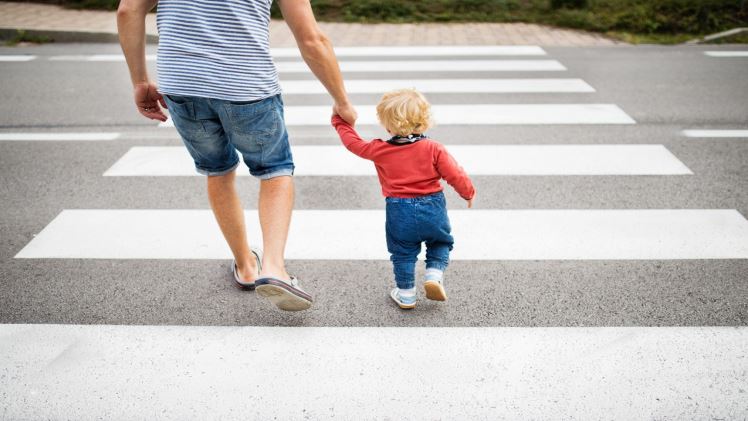Traffic Safety in St. Louis and Recent Initiatives to Prevent Accidents

In recent times, St. Louis has faced a significant challenge that extends beyond its cityscape. It is an increasing concern for traffic safety.
As reported by the St. Louis Post-Dispatch, the city experienced a notable surge in traffic fatalities. It reached a peak of 81 in 2020 amidst the unprecedented challenges posed by the global pandemic. Despite the world adapting to new norms, the repercussions of 2020 persisted, resulting in 78 reported fatalities in 2022.
This figure is the second-highest recorded fatal crash total in the past two decades. It underscores the urgent need for comprehensive measures to address traffic safety concerns.
In this article, we will discuss the intricate landscape of traffic safety in St. Louis. It examines recent initiatives undertaken to prevent accidents, safeguard lives, and shape the future of transportation within the city’s boundaries.
Current Traffic Safety Landscape in St. Louis
The traffic safety landscape in the city is characterized by a troubling surge in accidents, injuries, and fatalities. Among the recent fatalities are those highlighted by KSDK. The news reports that the St. Louis Metropolitan Police Department is actively investigating two fatal crashes that occurred recently. Despite being unrelated, these tragic incidents share a commonality – in each case, the drivers lost their lives.
The initial incident unfolded around 3 a.m. near Germania and Sharp Avenues, roughly half a mile north of Interstate Highway 55. The second crash occurred at around 5 a.m., near the Halls Ferry traffic circle. Regrettably, both drivers succumbed to the severity of the crashes at the respective scenes.
These incidents highlight specific areas of concern within the traffic safety landscape, prompting an urgent examination of factors contributing to such tragedies. Distracted driving, speeding, and pedestrian safety emerge as critical focal points, demanding a targeted approach to address these issues. Additionally, high-crash corridors and intersections necessitate heightened attention and intervention.
When examining the broader context, contributing factors may include infrastructure challenges, inadequate enforcement, and limited public transportation options. Understanding and addressing these underlying issues are crucial steps in developing effective strategies to enhance traffic safety.
A Pioneering Citywide Commitment to Traffic Safety
In response to the alarming increase in traffic-related fatalities, the city has taken decisive action through recent traffic safety initiatives. According to the City of St. Louis, Mayor Tishaura O. Jones has signed the St. Louis Safer Streets bill (BB120), marking the city’s inaugural citywide commitment to road and pedestrian safety.
This groundbreaking initiative aims to enhance safety through a multifaceted approach. It leverages infrastructure projects based on completed traffic studies that were previously hindered by funding constraints.
The bill prioritizes improvements in ten high-crash intersections, addressing areas of significant concern for accidents. Furthermore, the initiative targets main thoroughfares, including Goodfellow, Union, Jefferson, Kingshighway, and Grand.
This strategic investment seeks to rectify immediate safety concerns and positions the city to develop its inaugural mobility and transportation master plan. Departing from a ward-by-ward traffic safety approach, this shift represents a holistic, citywide effort, unlocking access to federal resources previously unavailable to St. Louis.
Redefining Traffic Safety Through Automated Enforcement Measures
St. Louis is exploring innovative strategies to enhance traffic safety, considering the implementation of automated traffic enforcement tools. According to St. Louis Public Radio, the city is contemplating the reintroduction of red-light and speed cameras as a proactive measure to reduce fatal traffic crashes.
While red-light cameras were initially adopted in 2007, their effectiveness was curtailed in 2015 when the Missouri Supreme Court deemed the city’s program unconstitutional.
To address past concerns, a draft legislation is being considered, aiming to reinstate automated enforcement in a constitutionally sound manner. The proposed legislation mandates vendors to provide cameras capable of capturing pictures and videos of incidents, including the driver’s identification.
Recognizing potential privacy issues, the draft emphasizes restrictions on the sale of video and photo data collected by the cameras. By considering these safeguards, the city aims to deploy technology for traffic law enforcement and address legal and privacy concerns.
Legal Recourse for Traffic Victims
In the aftermath of traffic incidents, victims have a crucial ally in the form of personal injury attorneys. These legal professionals play a pivotal role in navigating the aftermath of accidents. They offer solace and support to those grappling with the consequences of such events.
Well-versed in the complexities of the legal system, a St. Louis personal injury attorney can represent individuals who have suffered harm due to negligence or misconduct. Their role extends beyond legal expertise. These attorneys provide a vital link between victims and the pursuit of justice.
According to TorHoerman Law, whether advocating for compensation or representing clients in court, these professionals serve as indispensable allies for those seeking redress. As pillars of support in the legal realm, these professionals contribute significantly to the overall resilience and well-being of traffic victims in St. Louis.
Future Avenues for Road Safety
Despite these positive strides, challenges in sustaining these initiatives persist. Legal complexities surrounding red-light cameras underscore the need for careful navigation of legal frameworks. Additionally, the city must contend with broader societal challenges such as changing driver behavior and building a culture of responsible road use.
Looking forward, the future of traffic safety in St. Louis hinges on continued collaboration and commitment from all stakeholders. City officials, law enforcement, community organizations, and individual drivers must remain steadfast in their dedication to safer roads.
Regular assessments of program effectiveness and proactive measures to embrace evolving technologies will be pivotal in shaping a safer future. Ultimately, the collective efforts of these stakeholders will determine the success and sustainability of initiatives aimed at saving lives on roads.
In conclusion, the evolving landscape of traffic safety in St. Louis reflects a dynamic interplay of initiatives, challenges, and a shared commitment to building safer roads. The city has witnessed tangible progress through recent interventions.
As the city navigates its journey toward safer roads, one constant remains – the collective responsibility shared by city officials, community organizations, and individual drivers. The key to success lies in continued collaboration, monitoring program effectiveness, and adapting strategies to emerging challenges.





